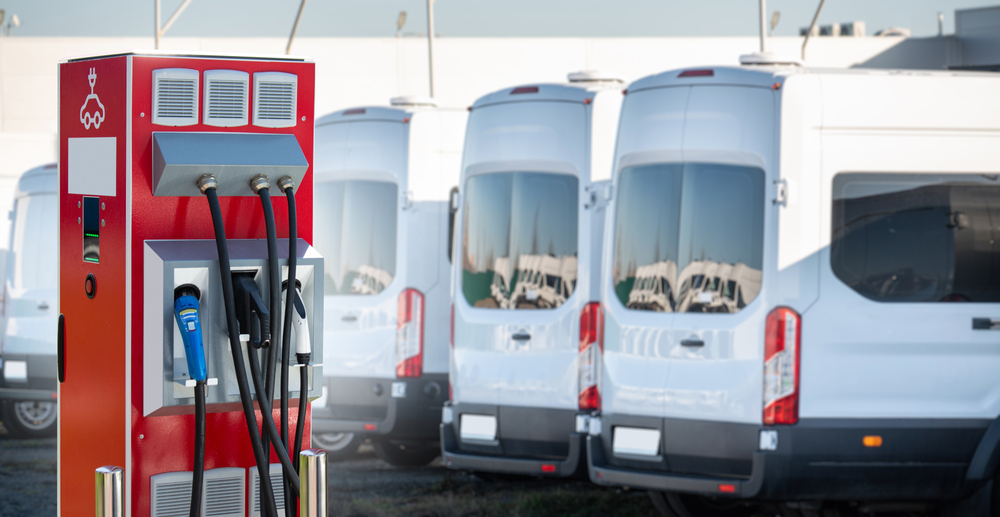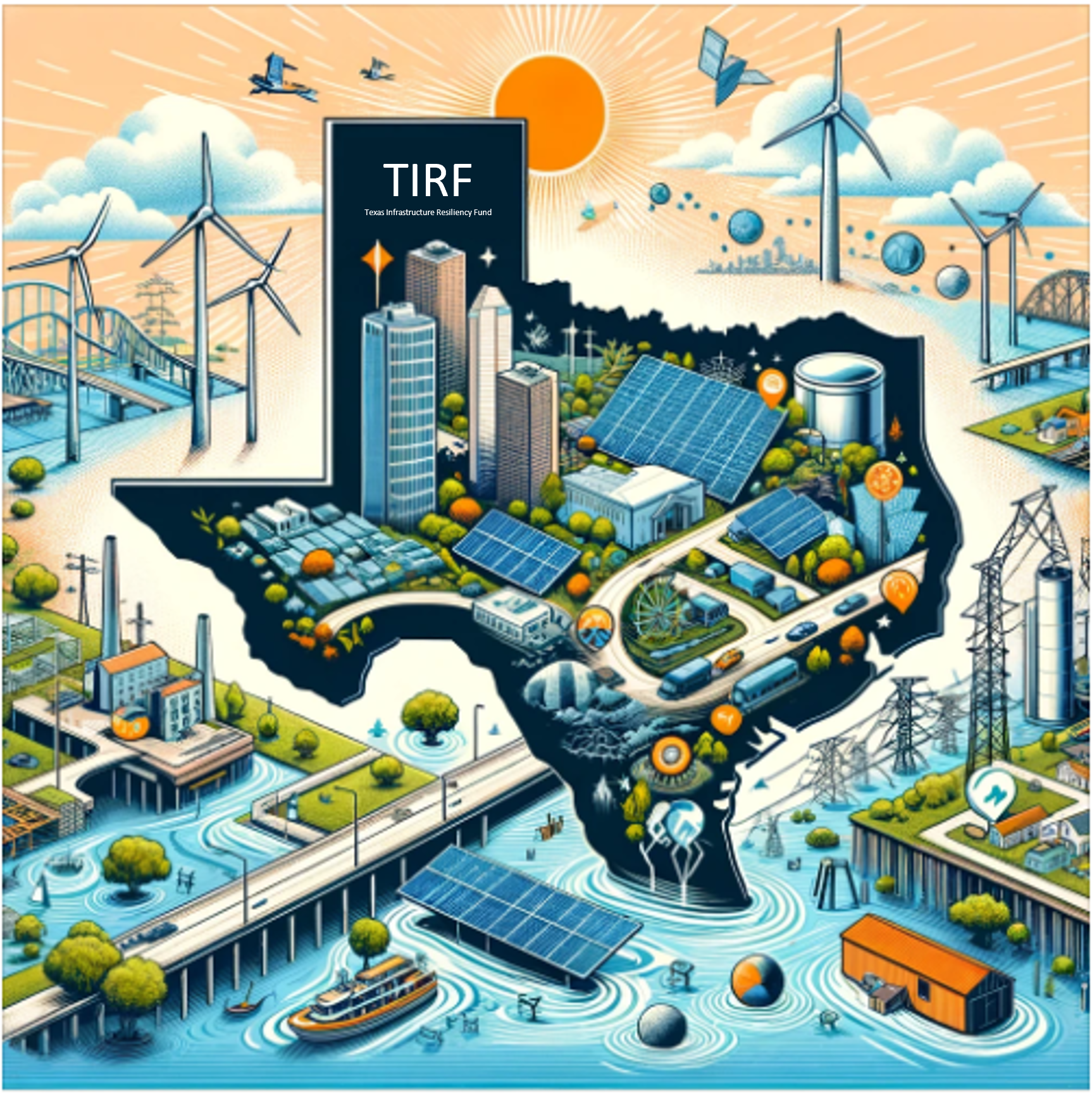How Microgrids Power EV Fleet Charging

EV fleets require large amounts of reliable energy. On-site microgrids offer facilities low-cost, resilient power.
The transportation sector is the largest emitter of greenhouse gases, making it a prime candidate for electrification and decarbonization. Across the U.S., an increasing number of policies and financial incentives support the widespread switch to electric vehicles (EVs), not just for passenger cars but for municipal, commercial, and industrial fleets as well.
However, facilities and fleet managers should be aware that the switch to EVs comes with high electric loads, reliability considerations, and related costs, including potential utility service upgrade costs to service the charge loads. Fleet EV charging will require large amounts of reliable energy during specific charging windows. Despite best intentions, the utility grid will struggle to make the fleet facility infrastructure upgrades needed to support this transition.
For reliable, cost-effective power, on-site microgrids provide the best option for supporting a seamless transition to EVs.
Financial Incentives Support the Rapid Switch to EV Fleets
More municipalities and businesses are investing in EVs over traditional light and heavy-duty vehicles with reciprocating internal combustion engines (RICE). The market is rapidly shifting due to factors like local emission regulations, with several states offering funding and regulation for EV trucks, such as the Advanced Clean Trucks Regulation in California.
At the same time, the total cost of ownership (TCO) of electric trucks is decreasing to become more comparable with RICE vehicles. Although upfront infrastructure costs remain high, EVs offer operational and maintenance savings compared to RICE vehicles, as well as significant fuel cost savings.
The Inflation Reduction Act offers several financial incentives for EVs as well as for microgrids. Commercial EVs are eligible for federal tax credits up to $40,000. The tax credit for charging equipment is extended through 2032, offering 6% for commercial vehicles, up to a limit. Another $1 billion in rebates is available for states, municipalities, Indian tribes, and non-profit school transportation associations to replace their heavy-duty vehicles with EVs. Microgrids and their related distributed energy resources such as CHP, solar, and battery energy storage are eligible for 30-40% ITC, with a direct pay option for some entities.
EV Charging Will Require Large Amounts of Energy
Facilities that make the switch to EVs soon will be best positioned to realize the benefits of electric fleets and keep up with shifts in regulations and consumer expectations. However, facilities switching to electric fleets do need a plan for supporting the increased electric load and related electrical infrastructure needed for EV charging.
These loads can be significant. A typical package distribution facility with 100 EV light-duty trucks may need about 1.5 to 3 MW of additional power to charge all the vehicle batteries overnight, while a municipal bus fleet of 100 vehicles would need 4 to 10 MW of charging capacity depending on fleet charging schedules and average miles driven.
Some facilities may be able to take advantage of off-peak charging for reduced utility rates. However, this assumes the power will be available at all. Utilities need a major build-out of high-voltage transmission lines, interconnections, substation upgrades, and other investments in order to support widespread EV charging, and they need to start building this capacity now, or fleets may have to delay their EV fleet deployments.
On-Site Microgrids Offer Reliable Charging and Predictable Costs
To enable a faster, effective energy transition to electric vehicles, utilities and facilities need microgrids to support fleet charging. An on-site microgrid gives a facility control over its energy supply chain, allowing it to minimize utility usage during peak times, avoid energy constraints, and lower overall energy costs and GHG emissions.
To maximize benefits, a microgrid should be integrated with a facility’s EV charging plan from the start. The microgrid can include distributed energy technologies such as cogeneration, solar panels, and battery energy storage.
A Unison Energy microgrid offers your facility resilient, low-cost, 24/365 power for EV charging and other operational needs, all while minimizing the impact on the local grid.
- Resiliency: A microgrid gives a facility control over its energy supply chain and helps prevent operational disruptions. A microgrid’s reliability, including during grid outages, is critical for fleet owners whose business relies on the ability to charge vehicles whenever needed.
- Energy costs: With a microgrid, a facility can keep energy costs down and predictable, even while energy needs and local utility energy costs rise.
- Cut carbon emissions: A hybrid microgrid lets a facility lower the CO₂ footprint required for EV charging. It can offer emission cuts relative to utility power, contributing to the company’s sustainability goals.
- No upfront investment: We finance the projects on our balance sheet. Use your capital for other purposes while we pay for the microgrid. We will also install and pay for the EV charging equipment.
At Unison Energy, we design, build, operate, own, and maintain microgrids, providing the expertise and the financing through an Energy Services Agreement (ESA). Our turnkey solution enables your site to support EV fleet charging and other operational needs, while saving money on electric and thermal, lowering carbon footprint, and ensuring energy resiliency.
To learn more about how a Unison Energy microgrid can support EV fleet charging, click here to contact a Unison Energy sales representative.
Energy insights, delivered
Subscribe for more content.
Related Blogs

The Texas Infrastructure Resiliency Fund: Empowering Businesses with Onsite Microgrids
Deadlines for the Inflation Reduction Act
Canadian Carbon Reduction Incentives: What You Should Know